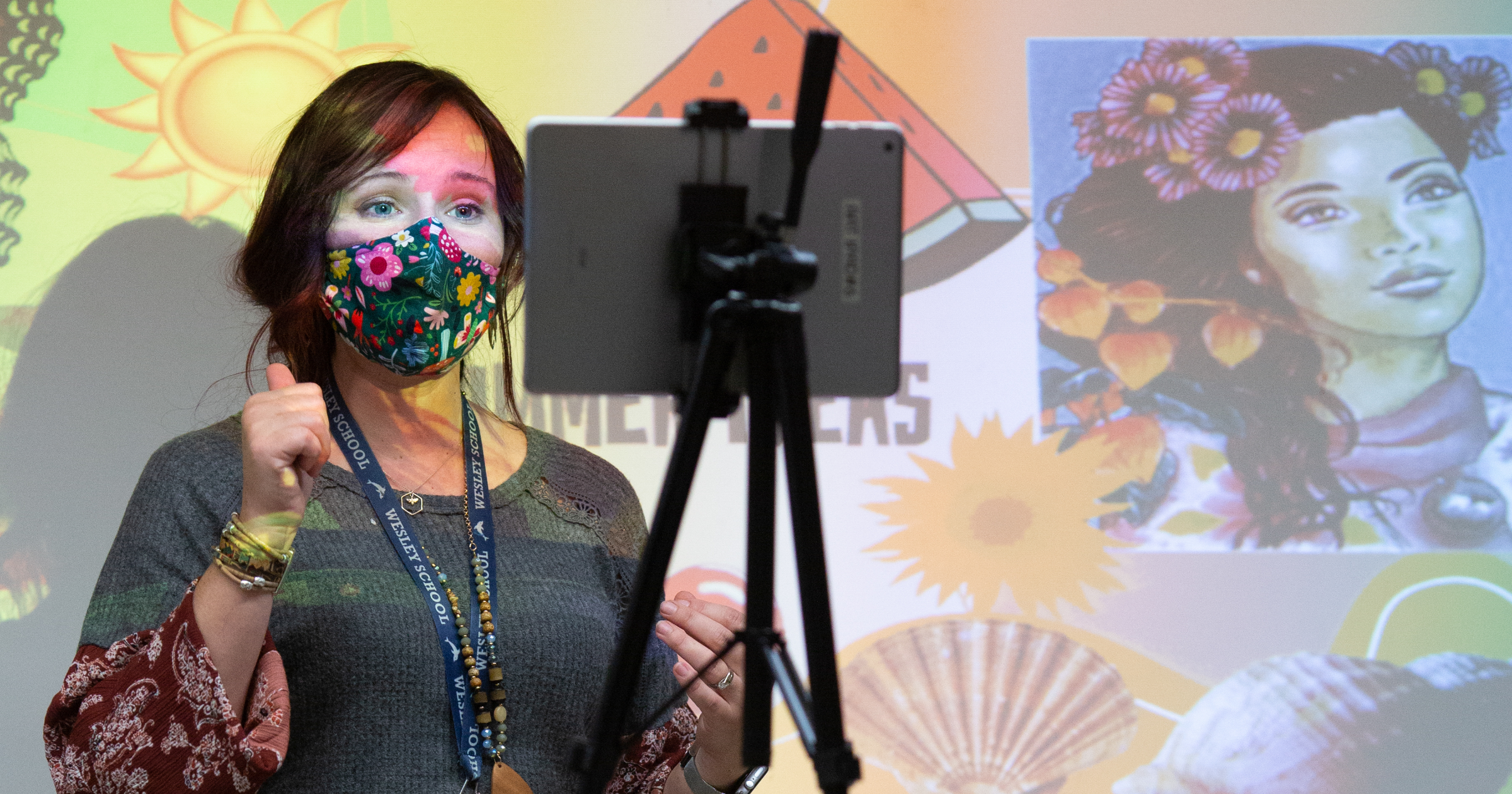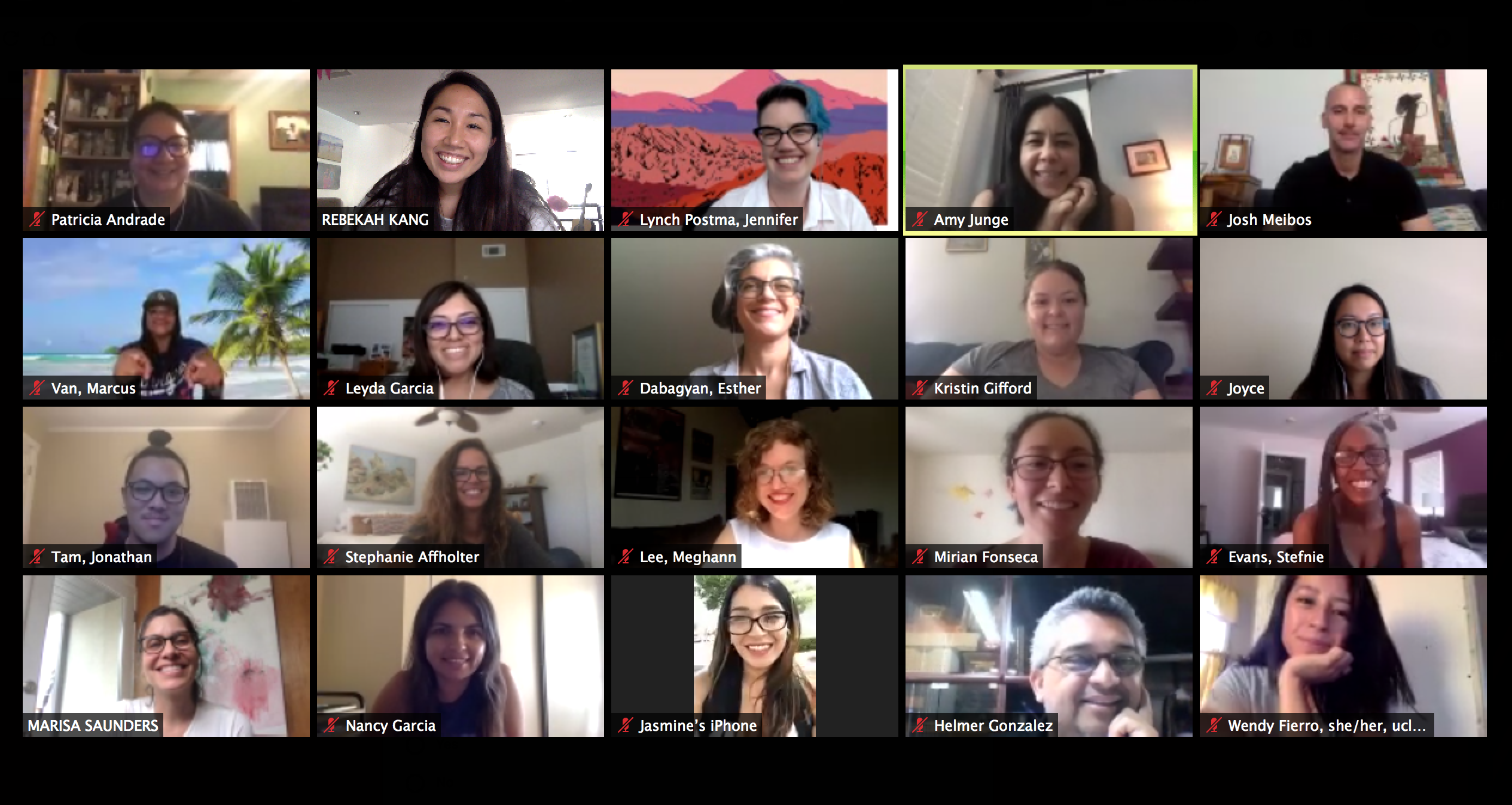
Photo by Allison Shelley for American Education: Images of Teachers and Students in Action.
Fighting isolation in 2020 has become a dilemma in the wake of the COVID-19 pandemic. Meanwhile, educators are absolutely overwhelmed with the overnight shift in expectations of their job descriptions.
In case you didn’t already know, 2020 is an especially hard year to be a teacher.
This has led to immense struggles for many educators and nudged many towards resignations or early retirements.
One antidote to an issue which will surely exacerbate the already prevalent teacher shortages afflicting many states and districts: Help teachers feel more connected to each other. Give them a venue to share their stories and insights with others who are enduring the same challenges.
I was lucky enough to be asked to facilitate such a group from April to December of 2020.
As a Teacher-Powered Schools Ambassador, I have had the enormous opportunity to meet educators from around the country who have been empowered to make decisions in their schools generally reserved for administrators. The learning communities that have resulted from these teachers’ efforts are remarkable and regularly spawn some of the most innovative student-centered practices in education today.

In April, I reached out to a group of seven teachers from such far-flung locales as Pennsylvania, Minnesota, California, Washington, and Arizona (myself in North Carolina) to have monthly conversations about Teacher-Powered Practices, while fostering a community of support during a trying time. Aside from being an incredibly enjoyable experience, it offered me a window into the more general struggles facing educators around the world this year.
Mike Dunn, one of our group members, reflected on the power of gathering such a diverse group. “Without this group, I don’t know when I would be sitting in the same room with [these educators]. The unique minds and ideas and skills and perspectives of the group has caused me to continually examine and rethink my practice, my school, my philosophies, and given me this hour once a month to…grapple with those things with other people that are outside of my typical interactions.”
I remember tearing up in our first conversation in April because I felt so validated in my own struggles as a high school science teacher—knowing that I wasn’t the only one and that my school also wasn’t unique in its transitional stress moving from 100% in-person to 100% online schooling in a matter of days.
Indeed, this was an antidote to the isolation so many people are enduring right now.
Over the months, our trust deepened while the world convulsed with the crises of George Floyd’s murder and the resultant protests, a tumultuous and polarizing election, and a pandemic raging across the world. Several members of my collaborative were directly affected by the George Floyd killing, as they lived in Minneapolis and had students who were highly involved in the activism that emerged in the weeks that followed.
Our conversations became wide-ranging and addressed many of these crises.
How can we actively promote anti-racist practices in our schools?
How do we address student concerns about these issues?
How do we build relationships with a new cohort of students over Zoom when they won’t even turn on their cameras?
And what are some ways to engage students in hybrid or virtual environments?
Brian D’Auteill, another participant, commented how, “Being able to talk about and brainstorm all of these issues together…there have been solutions that this group has come up with that have been great for my school…I feel like there’s a sense of purpose…and a sense of being a part of something greater as a part of this group.”
Though we only met as a group once a month, our members started reaching out to each other between meetings to further discuss some of the topics of the moment. The connections started to flourish in unforeseen and organic ways that will undoubtedly endure far beyond our final conversations.
I was touched by one of our members reaching out to me after a meeting to check in and see if I wanted to talk more about a dilemma I had mentioned in our discussion. We had an hourlong chat that helped me process what was going on for me and left me with a new confidante—a valuable asset during these isolating times!
There has never been a more appropriate time to discuss teacher-powered practices because they lead to student-centered decisions. Though educators are struggling, students are arguably even more challenged right now. Just supporting students in their mental health is a full-time job this year, much less getting them to turn in their work!
So, our conversations were structured around poignant practices for the COVID era, like keeping students at the center of decision-making, meaningfully involving families and communities, and honoring student voice and choice, just to name a few. Without doing these things, schools are bound to amplify absenteeism, disengagement, and mental health crises for students in 2020 and beyond.
Tichina Ward-Pratt, another teacher in the collaborative, reflected on this point, “It’s good to hear the unique school setups of other places [to reflect on] how other schools are run and also what different systems and structures they have in place because it gives me a sense of the possibilities for that to be at my school and other schools in my district.”
Kevin Ward echoed her thoughts about comparing notes between different teacher-powered models, “I think it just reminds me that this is a movement and it just takes on so many different shapes because the idea that teachers actually should probably be running their school is a really good idea no matter how it manifests itself.”
We are wrapping up our work together and I’m struck by how valuable it has been to have these conversations over such a wild and unpredictable year. One of the main concerns that our group has discussed is the difficulty in creating a learning community without being face-to-face. Though we may see our students’ faces from time to time on a screen (if they’ll turn their cameras on!), something is lost in translation that’s hard to put a finger on.

Nevertheless, through our time together, our group experienced what it was like to create a meaningful connection to each other and transcend the limitations of distance, Zoom, and unpredictable internet. The combination of candid sharing, structured conversations, and a genuine curiosity about what life was like for other educators seemed to help us accomplish this often fleeting goal.
I wrote this blog before our last meeting in December 2020, but just before we were supposed to end our work together, one participant reached out to suggest that we keep going.
Indeed, for Kevin Ward, this has been a rare silver lining to an otherwise infamous year for educators (no to mention society at large): “This never would have happened if it wasn’t the pandemic….I’m really glad that we’ve all gotten to come here and talk about different things together and get to know each other a little bit and see how interesting and fascinating all of [the group members] are.”
There’s nothing like a community to bolster your resilience to anything 2021 throws your way. So, we have no plans of ending our discussions, sharing, and learning together anytime soon.
 NEWSLETTER SIGN-UP
NEWSLETTER SIGN-UP



